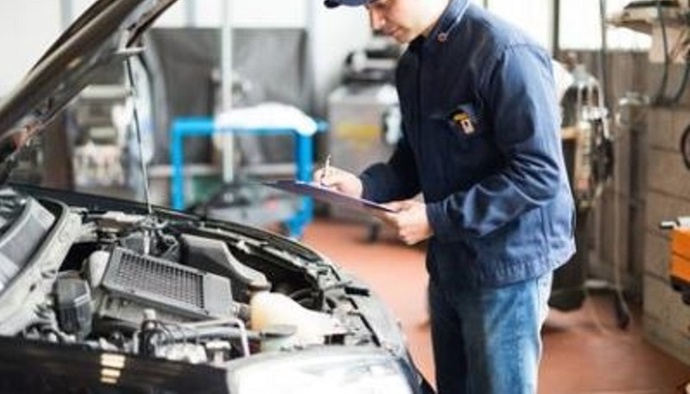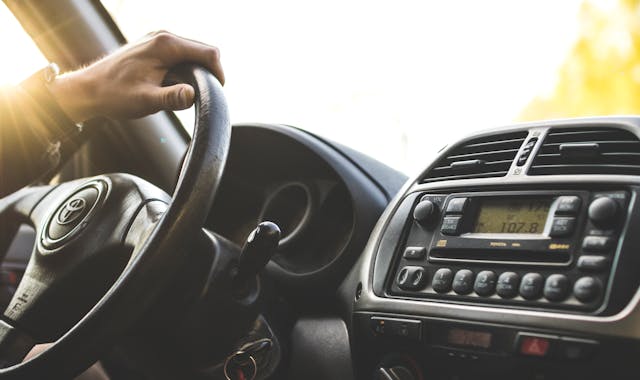Before you pay, know what are you buying! there is no room for after sale surprises when buying a used car.
Many people prefer to buy used cars over the new ones because of the significant drop in price between them, and not to lose large sums when reselling, but it is necessary when buying used cars to check them professionally so that the buyer is not exposed to deception and fraud of some dealers, so we offer you today a number of tips Important for those coming to buy used cars to ascertain their condition and efficiency.
If you already have one, the pains in the neck comes when you have to re-register each and every year (depending on your state, you’ll renew either annually or biennially through the state’s Registry of Motor Vehicles). A big part of that is taking your car in for a mandatory vehicle inspection to make sure your car is safe on the road.
What Is A Car Inspection?
Vehicle inspection is a procedure mandated by national or subnational governments in many countries, in which a vehicle is inspected to ensure that it conforms to regulations governing safety, emissions, or both. Inspection can be required at various times, e.g., periodically or on the transfer of title to a vehicle. If required periodically, it is often termed periodic motor vehicle inspection; typical intervals are every two years and every year.
When a vehicle passes inspection, often a sticker (inspection decal or inspection sticker) is placed on the vehicle’s windshield or registration plate to simplify later controls, but in some countries—such as the Netherlands since 1994—it’s no longer necessary. Inspection stations are places to drive inside to see if a vehicle passes inspection once a vehicle is due for inspection. Most US inspection decals/stickers display the month’s number and the year.
What Do You Need For Car Inspection
You need something to take notes and a flashlight, but with the technology available, the smartphone with a camera and a built-in flashlight will work just fine. If you have a small magnet, it may be helpful to detect repaired rust stains. You also need a tissue to check engine oil and other oils. Most importantly, you need a more knowledgeable friend who can help you weigh the pros and cons and make an informed decision.
The First Thing To Do In A Car Inspection – Take A Quick Look
Almost any vehicle has some common problems or weaknesses for this model.
With the presence of the Internet, after a little research, you can learn about the industry defects and the known problems of the car that interests you. Once you know the common problems, you will have a better idea often what you are looking for. This will also help to avoid troubled cars
With this quick look, you want to know if it is worth or should you look for another car? Start by quickly walking around and looking at the big picture. Look for major rust spots that should tell you to avoid this car.
Check out the interior. How does the steering wheel, driver seat and interior door handle appearance also have any odors? Tobacco and other strong odors are difficult to get rid of, especially if the interior is canvas.
The easiest way to detect engine problems is to start it cold; is there any smoke from the exhaust? Is the engine running smoothly or difficult and have loud beeps heard when starting up? If the engine is running poorly or makes a loud noise at startup, or if there is blue smoke or white smoke, avoid the car. The engine should run easily and smoothly.
Used Car Inspection Checklist – What Do They Check In car Inspection?
When checking a used car, you should look for two things: signs of the main problems that should make you avoid the car and also the minor problems that need attention or that you can use to negotiate the price later. If any evidence of a major problem is found in a car, you do not need to complete the scan and you must search for the next vehicle.
Major problems include rust damage, potential problems with the engine and transmission, previous serious accidents, flood and torrential damage and signs that the vehicle has been abused or neglected by its previous owners. Minor issues are those that can be easily fixed, including worn tires, minor suspension and brake problems, as well as defects such as scratches and light bumps, etc.
Used Car Inspection Checklist – Exterior

It is difficult to check the vehicle if it is parked inside a garage; or at night so that you can improve your chances of reaching all parts. You should look at the car from a distance; this is the easiest way to notice differences in color. It is a sure sign of car accidents and also a sign of poor repair quality – do check the following:
- Windshield
Look for cracks, chips, and loose seals since these are considered safety hazards. If you’ve got a crack or a chip, be sure to get it fixed ahead of time. This way, you won’t have to waste time failing your inspection, then retaking it. keep in mind some car models windshields are more expensive than you think, so do not underestimate it if anything wrong with it.
- Car Paint
A good paint job is every car’s staple feature, and thus represents a very emotional measure of quality for the car. make sure it is not faded or looks discolored, and it is deep and shiny!
Make sure there is no cracks in the paint, no mismatch in color look, or any dust traces.
Check the car side lines and inspect of any body paint waves or drops and runs.
- Chassis
At this point, your mechanic will move to the underside of your vehicle to check your shocks, coil springs, axles, and frame for any wear and tear or damage
- Condition of Your Tires
Old, worn down tires won’t help you pass a safety inspection. Check the wear indicator bar on your tires. If the tread is worn down to that point or further, get new tires before the inspection. The safety check also includes the condition of your spare, so check that as well. Also, make sure the tires on your car are the same size and style. Even if they have good tread, having randomly sized tires could make your car flunk the safety inspection.
- Light Functionality
We’re not just talking about your headlights here, either. A safety inspection checks to make sure that all of your car’s lights are in good working order. Beyond headlights, this also includes your high beams, emergency flashers (front and back), turn signals (front and back), side lights, brake lights and backup lights.
- Brake Performance
It’s no secret that breaks are an important safety feature on your car. If the mechanic finds that your breaks are worn down or not working properly, your car won’t pass inspection. Have them checked ahead of time and get your brake pads replaced if needed before the inspection to help it go smoothly and quickly. This also includes the emergency brake. During the inspection, the mechanic will enable the emergency brake and put the car in gear to see if it stays in place.
- Steering and Alignment
An auto mechanic will inspect all components of your car’s steering system. If anything’s found to be loose or failing, they’ll let you know what specifically needs to be fixed to pass muster. If your car’s alignment is slightly off, it might be overlooked. But more serious alignment issues are going to have to be fixed to pass a vehicle inspection.
- Car Suspension
Another essential thing to check in a used car inspection is the suspension. Stand back from the car and see if it’s slumping or sagging anywhere; what you want it to see that it’s standing level. Push down on each corner of the car. If the shock absorbers are in good condition, the car should rebound only once. If the car continues moving up and down, there’s something wrong. Tug on the top of the front tires. Feel for any movement and listen for and clicking sounds. If you feel or hear anything, it could mean a suspension joint or wheel bearing is broken.
- Fluid Leaks
Serious fluid leaks and anything else that could pose a safety hazard to you, your passengers, or other drivers are an important checkpoint for mechanics. If your car’s got no leaks, don’t assume that you’re going to pass with flying colors. Take a look at the car as a whole.
Remember that vehicle inspections are there to make sure that our cars don’t fall apart as we’re driving down the street, putting ourselves or other people in jeopardy. So, take your safety inspection as seriously as you’d want other drivers to take theirs.
- Exhaust System
When completing a used car inspection, it’s important to check the exhaust system. look for black spots, which might identify oil leakage. also check for any engine pressure leakage from the pipes. Run your finger along the exhaust system. Greasy muck is a bad sign. While the engine is running, If there is white vapor, this is also a bad sign, if it’s not cold outside. If your muffler is scraping the ground or being held in place by a shoelace, don’t even think about taking it for inspection until it’s fixed. That’ll get you a quick FAIL every single time.
- Rust
The final thing to do when performing a used car inspection of the car’s exterior is to check the under body for rust and any signs of frame damage. look for rust on doors frames, under feet room where you sit. Also check parts that are not replaceable, like part of the car cabin that come as a whole, because it will be hard to fix. Rust is some like cancer for a car once it appears if its not taken care of on time it will keep spreading.
Tip: Place your magnet in the suspicious area, if there is no metal under the paint, the magnet will not catch
Car Inspection Checklist – Interior

- Dash Board
Check the dashboard for any lights and check engine alerts. Every used car inspection should also include a look at the odometer. Normally, high mileage is one of the first things people try to avoid when buying a used car. . Keep in mind, there are a lot of variables to consider here. But a car’s age is not only measured by mileage; time is also a factor. A 15-year-old car with relatively few kilometers on the clock doesn’t automatically mean it’s a good thing.
- Seats And Surroundings
The seats should all be intact, and solidly anchored to the floor. Make sure its in good condition no cracks or torn parts, whether its leather or not it should look good!
Look to see if the upholstery has any stains, rips, cigarette burns, or other types of damage. Also check to see if the other materials inside the vehicle ( plastics, woods, metal, etc.) have any scratches, dents, or other damage.
Don’t forget to check if the seats has any electrical functionalities that they are working properly.
- Seat Belt Functionality
As a rule, in order to pass a vehicle inspection your car’s seat belts have to be easily accessible, in good shape, and in perfect working order. This goes for the back seat as well as the front, so be sure to check these as well.
- Air Bags
Airbags are essential for your safety, do check them if they are properly connected and there are no electrical or mechanical malfunction. Check the dashboard lights for that or you can test that connecting to the car computer and scan if any airbag faulty codes appear.
- AC/Heater
Make sure your AC system is working properly for both cooling and heating. check the AC Freon level and condition. Also check the main hose thermostat to make sure your heater will work as required in winter.
Another important thing to check the AC fans and hose pipes, that is a lot of work in the interior if something is not working there. The air rush should be good from the ventilation holes and feel the cold air at all fan speeds.
Don’t be satisfied if the seller tells you that the air conditioner is working but only needs to recharge the Freon.
- Car Extras And Electrical Functions
Make sure the interior lights are working. When you turn the engine on, look at the display in the dash to ensure all warning are off. Also during the used car inspection, you should check all electronics / technology inside: stereo system, navigation, parking sensors, reverse-camera, and any other additional options the car is equipped with.
Tip: Open and close all doors; they must open and close easily. Also notice the skins of the doors if are in good condition.
Car Inspection Checklist – Under The Hood

- Check engine Oil Leaks
well and make sure there is no leakage of oils on it. A gasket leak will leave dark brown oil stains on the engine block. This may be the cause of an expensive repair in the future
- Cylinders Conditions.
Open the cover of the engine oil filler and note whether there are foams or not to ensure the integrity of the cylinders and the absence of leaks in them.
- Timing Belts.
Make sure that there are no tear or wear in the belts (belts) or in the conductive hoses For the engine. Make sure all belts have no signs of cracks or drying out.
- Engine Sound.
start the car and make sure the engine sound is uniform and there is no concussion or vibration in it. No voices are coming from cooling fans, cylinders, cams and crankshaft are running smooth as well.
- Radiator.
open the radiator and make sure that the liquid is clear and that it is not mixed with the engine oil. The hoses for the radiator should also not be soft.
- Check All Fluid Reservoirs.
Check the reservoirs for the coolant/anti-freeze – windshield washer fluids – break fluids – power steering fluids they are also very important to be in good condition. you don’t want to keep on adding up every day or two before you get them fixed.
- Engine And Transmission Oils
Make sure the vehicle has enough oil when you pull out the dipstick. Also, if there is a residue of foam inside of the oil filler cap, there may be a leak in the head gasket. If found, this should conclude your used car inspection, as this is a deal breaker. Additionally, the coolant should not be dirty and brown, as this also can indicate a leaking head gasket or simply that it has never been flushed.
- Transmission Oil
Upon pulling out the transmission dipstick, you should find the fluid pink or red. An older car may be a darker color, but under no circumstances should it smell or look burnt. Of course, this should also be full.
- Wiring And Electrics
Check the ignition system and all spark plugs wires for a good start and smooth running of the engine. Check the wiring for any sensors around the engine that might get damaged from any excessive heating. alternator/dynamo wire need to be in good shape in order to generate and sustain the power bank.
Corrosion of the battery or its poles not only indicates that this car needs a new battery and possibly a new battery cable, and this suggests that this car may not have been serviced and maintained regularly.
- Fuel System
Can you smell fuel? If so, check all the fuel lines better. Rubber hoses may grow cracks over time, and steel lines may rust through in some parts of the fuel system. The last thing you need is a fuel leak that will ruin your whole driving experience.
Car Inspection Final Step – Test Drive It!

Before driving test, check vehicle ownership papers, adjust seat and mirrors, and familiarize yourself with the controls. The longer the driving period and the varied between different speeds, the greater the chance of learning about the existence of many problems. Most problems start to appear after the car is heated for 20 minutes of driving, such as engine heat.
There are some problems, such as wheel wear, angle setting, and stacking, and tires only appear at high speeds. The transmission and suspension problems are easier to spot when driving on slow or unpaved roads.
1. The Car In A Standing Position
- Transfer the transmission from the (N) to (D), is there is a long delay before you feel the transmission action? (The car should move immediately quietly if you lift your foot from the brakes)
- Move the wand from the (D) to (R), do you feel a strong jerk or tremor (if this happens it indicates you will need a repair in some of the gears components soon)
- Do you feel excessive motor vibration? ( This indicates engine mounts probably need to be changed)
2. Test Drive The Car Inside The City
- Did you notice any shaking or chopping during the acceleration? The engine should feel smooth and responsive not slow and annoying.
- Is there smoke?
- Is there any noise or vibration in the acceleration or deceleration?
- Have you noticed click noise or appeared when accelerating? (Problems with a gear box)
- Are the gears shifting smoothly in acceleration and deceleration, or do you feel a sense of hesitation?
- Any tremors when you come to a complete stop?
- Upon complete stopping, is the number of engine RPM uniform or jumping up and down? (Idle sensor problem)
- Is the car running in a straight line well or is it heading to one side or the other when pressing the brakes?
3. Test Drive The Car On A Highway
- Do you walk in a straight line or deviate in a specific direction? (Tires need alignment – adjust the angles)
- Do you feel shaking at higher speeds? (Tires and wheels problems)
- Any buzz or noise?
- Are there strange noises when accelerating or slowing down? (When transmitting speeds, operating the four-wheel drive system, braking, etc.)
- Is there steering wheel vibration during braking? (Brake pads deformed or invalid taps)
- Does cruise control work?
How Can I Find Car Inspection Near Me?
For your convenience, we make it easy for you by scheduling a full inspection of your next vehicle. We will send to any location one of our certified mechanics who will perform a full detailed inspection. The mechanic may scan the car’s various computers for trouble codes and test drive the vehicle if it’s safe.
You will receive a full report with additional photos of the exterior and interior and any thing upon your request.
How Much Does A Car Inspection Cost?
For a full pre-purchase car inspection please contact us 48 hours before you want to perform the inspection of the desired car. the full car inspection cost is about 225 USD.
For more details please visit our car inspection page to submit a form and schedule a date for your car inspection.
How Long Does A Car Inspection Take?
There are certain procedures that would require so much of your patience because it could actually depends on how thoroughly the job is done, and in what condition the car is really in. Car inspection would also depend on the place or city where you live. In some states, they have very strict procedures in this kind of endeavor so don’t be surprised if it takes longer than the usual.
The more problems with the car the more time it needs to be inspected. younger guys who can work fast can finish the actual car inspection in twenty to 30 minutes if it is in a mint condition. Paper work may take another ten minutes.
A FULL thorough car inspection could last up to two hours or more easily, if that includes time for a test drive.
Make The Best Pre-Purchase Car Inspection With Bid Export
BidExport.com is authorized and licensed online auction that was shaped by individuals who have numerous long stretches of involvement in the US auto sales industry. Our team and representatives have been filling in as directors in enormous used cars dealerships and strategic logistics organizations.
Bid Export began 10 years back with a solitary used cars dealership in Los Angeles CA. Presently headquartered in Miami, Florida as worldwide leader in online car auctions, and a premier destination for the resale of the best used cars. With more than 150,000 listings you can find your dream car, or supply your auto business with both clean and salvage vehicles for prices much affordable than buying from dealerships.









